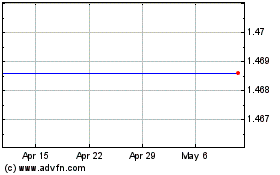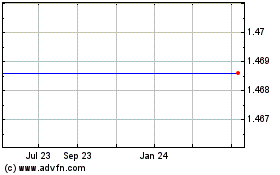GOOD EARNINGS FROM LOW HARVEST
VOLUME
In Q2 2017 Lerøy Seafood Group
(LSG) reported operating profit before fair value adjustment
related to biological assets of NOK 801 million in Q2 2017,
compared with NOK 760 million in Q2 2016. This corresponds to
operating profit before fair value adjustment related to biological
assets for Q2 2017 of NOK 27.3 per kg against NOK 18.5 per kg in Q2
2016.
The Group reported revenue of NOK
4,224 million, compared with NOK 4,262 million in the same period
in 2016. The harvest volume of salmon and the volume in Q2 2017 are
down 36% when compared with Q2 2016, but these figures must be
viewed in light of the high harvest volume in Q1 2017. For 2017 as
a whole, the harvest volume is expected to be higher than in
2016.
For the first half of 2017 the
Group reports revenue of NOK 9,684 million, up 20% on the
equivalent period last year. The operating profit before fair value
adjustment related to biological assets for the first half of 2017
was NOK 2,078 million compared with NOK 1,345 million for the first
half of 2016. The profit before tax and fair value adjustment
related to biological assets for the first half of 2017 was NOK
2,134 million compared with NOK 1,367 million for the first half of
2016.
-
"Salmon and trout prices remain at a high level,
and with such prices as the main factor, Lerøy Seafood Group can
report its highest revenue and highest operating profit in any
half-year period in the Group's history," confirms CEO Henning
Beltestad. "As previously reported, the harvest volume for salmon
and trout is down from the same quarter last year, but for the year
as a whole however, the harvest volume is expected to be higher
than in 2016," explains Henning Beltestad.
THE WILD CATCH AND WHITEFISH
SEGMENT
In the autumn of 2016, Lerøy
Seafood Group obtained 100% ownership of both Havfisk ASA (Havfisk)
and Norway Seafoods Group AS (now Lerøy Norway Seafoods AS). As a
result of this transaction, both companies were consolidated into
Lerøy Seafood Group as of 1 September 2016 and comprise the Wild
Catch and Whitefish segment.
Havfisk's primary business is wild
catches of whitefish. Havfisk has licence rights to harvest just
above 10% of the total Norwegian cod quotas in the zone north of 62
degrees latitude, corresponding to more than 30% of the total quota
allocated to the trawler fleet.
Havfisk's total catch volume in Q2
2017 was 16,769 tonnes, compared with 17,020 tonnes in Q2 2016. The
ratio of saithe in Q2 2017 was significantly higher than in Q2
2016. The harvest volume in Q2 2017 comprised 4,067 tonnes of cod,
6,585 tonnes of saithe and 2,050 tonnes of haddock. The
distribution in Q2 2016 was 6,057 tonnes of cod, 1,820 tonnes of
saithe and 4,181 tonnes of haddock. On comparison with Q2 2016,
prices for cod were up 9%, prices for haddock were up 30% while
prices for saithe were down 28%. The remaining quotas for cod,
haddock and saithe as of Q2 2017 are approximately 25,000 tonnes,
on par with the remaining quotas at the same time last year.
LNWS's primary business is
processing wild caught whitefish. The company has eight processing
plants in Norway, five of which are leased from Havfisk. LNWS is
the largest purchaser of cod from the coastal fishing fleet in
Norway.
The total contribution to
operating profit made by these two companies in Q2 2017 was NOK 86
million.
-
"Havfisk and Lerøy Norway Seafoods are important
companies and support the Group's long-term industrial strategy. We
look forward to generating lasting value by developing the
companies by means of long-term industrial planning, and are
confident we will succeed in this together with our employees at
sea and on shore. The recent tabloid debate on regulatory factors
has unfortunately been dominated by a short-term mentality, fear of
change and a lack of understanding of what is required to achieve
industrial development. I have faith in the Norwegian authorities
and trust that they will now allow us to develop our business
without interruption in the years to come. Good framework
conditions based on an understanding of what is required to sustain
and create jobs and value afford more potential for future
success," explains CEO Henning Beltestad.
FARMING SEGMENT - HIGH PRICES FOR
SALMON, INCREASE IN PRICES FOR TROUT
The Farming segment reported
operating profit before fair value adjustment related to biological
assets of NOK 613 million in Q2 2017, down from NOK 674 million in
Q2 2016. As previously reported, the harvest volume in Q2 2017 was
significantly lower than in Q1 2017. The segment harvested a total
of 26,156 GWT salmon and trout in Q2 2017, down 36% from the same
period in 2016. The harvest volume for the first half of 2017 is
12% lower than in the corresponding period in 2016. Nonetheless,
the Group currently expects to report a higher harvest volume for
2017 as a whole than in 2016. EBIT/kg increased from NOK 16.4 per
kg in Q2 2016 to NOK 23.4 per kg in Q2 2017.
In Q2 2017, Lerøy Aurora achieved
operational EBIT per kg of NOK 30.8. Lerøy Midt and Lerøy Sjøtroll
are reporting EBIT per kg of NOK 18.5 and NOK 20.7 respectively for
the same period.
-
"It is positive for the Group that trout prices,
after three difficult years, have now seen a substantial
improvement and are marginally higher than salmon prices in Q2
2017," confirms Henning Beltestad. "The sustained high price level
for salmon is, however, strongly affected by the fact that the
Norwegian fish farming industry has not increased production since
2012. In the near future, it will be of decisive importance for the
long term competitiveness of this industry that Norway gradually
starts to increase production," highlights Henning
Beltestad.
-
"The Group's release from stock costs in Q2 2017
are impacted by the low harvest volume, the higher feed costs and
very high direct and indirect costs incurred to comply with
statutory salmon lice limits, have resulted in release from stock
costs that we consider to be higher than normal," explains Henning
Beltestad. He goes on to add: "We are beginning to see the outline
of positive results from the measures implemented by the Group and
expect these to provide cost reductions in time."
VAP, SALES & DISTRIBUTION
(VAPS&D)
The VAPS&D segment reported
revenue in Q2 2017 of NOK 4,043 million, down 3% when compared with
the same period last year. Operating profit before fair value
adjustment related to biological assets was up from NOK 97 million
in Q2 2016 to NOK 115 million in Q2 2017. This provides an
operating margin before fair value adjustment related to biological
assets of 2.9% in Q2 2017.
-
"A low harvest volume in Q2 2017 has had an
impact on the level of activity for salmon and trout, but the Group
is very happy to have identified positive synergy effects within
marketing as a result of the acquisitions made within whitefish,"
confirms Henning Beltestad.
MARKET AND OUTLOOK
The Group is in a transitional
phase within production of salmon and trout, with extraordinarily
high direct and indirect treatment costs, combined with increasing
costs for prevention. One central element in the Group's strategy
is to minimise the number of treatments. Since 2013/2014, the Group
has made substantial investments in their own production of cleaner
fish. The Group is also investing in other tools to optimise
production. These include a significant increase in capacity for
mechanical cleaning and fresh-water treatment in well boats.
Prevention costs are expected to
increase in 2017, while costs related to treatment are expected to
fall. There is high potential to reduce treatment costs and the
Group has a clear strategy and goal to realise this potential.
Developments to date in 2017 have been positive, and the Group
currently expects to see a fall in release from stock costs in the
next quarters. Nonetheless, the Board of Directors acknowledges
that it will still take some time to realise the full potential of
the measures implemented.
For a number of years now, the
Board of Directors and management have clearly stated their views
on the need for changes to regulations in Norway. The Board of
Directors is of the opinion that a growth in demand over time is
perhaps the most important driver for global competitiveness and
increased value generation. From a long-term market perspective,
the Norwegian fish farming industry is in a challenging situation
in 2017, as lack of growth in volume has resulted in very high
prices. The Norwegian fish farming industry will only be able to
retain its global competitiveness over a time frame of the next
five to ten years if framework conditions facilitate growth in
production in Norway. Framework conditions of this nature must be
based on an understanding of environmental sustainability and value
generation.
In 2017, the Group expects to
harvest 175,000 GWT of salmon and trout, including their share of
LSG's volume from associates and a catch volume of more than 60,000
tonnes.
The Board of Directors is positive
to the market outlook, and currently expects to see an improvement
in result in Q3 2017 when compared with Q2 2017, and a
significantly better result for 2017 than in 2016.
Questions and comments may be
addressed to the company's CEO, Henning Beltestad, or to the CFO,
Sjur S. Malm.
This information is subject
to the disclosure requirements pursuant to section 5 -12 of the
Norwegian Securities Trading Act.
Q2 2017 Presentation
Q2 2017 Report
This
announcement is distributed by Nasdaq Corporate Solutions on behalf
of Nasdaq Corporate Solutions clients.
The issuer of this announcement warrants that they are solely
responsible for the content, accuracy and originality of the
information contained therein.
Source: Lerøy Seafood Group ASA via Globenewswire
Lake Shore Gold Corp Ordinary Shares (Canada) (delisted) (AMEX:LSG)
Historical Stock Chart
From Mar 2024 to Apr 2024

Lake Shore Gold Corp Ordinary Shares (Canada) (delisted) (AMEX:LSG)
Historical Stock Chart
From Apr 2023 to Apr 2024
